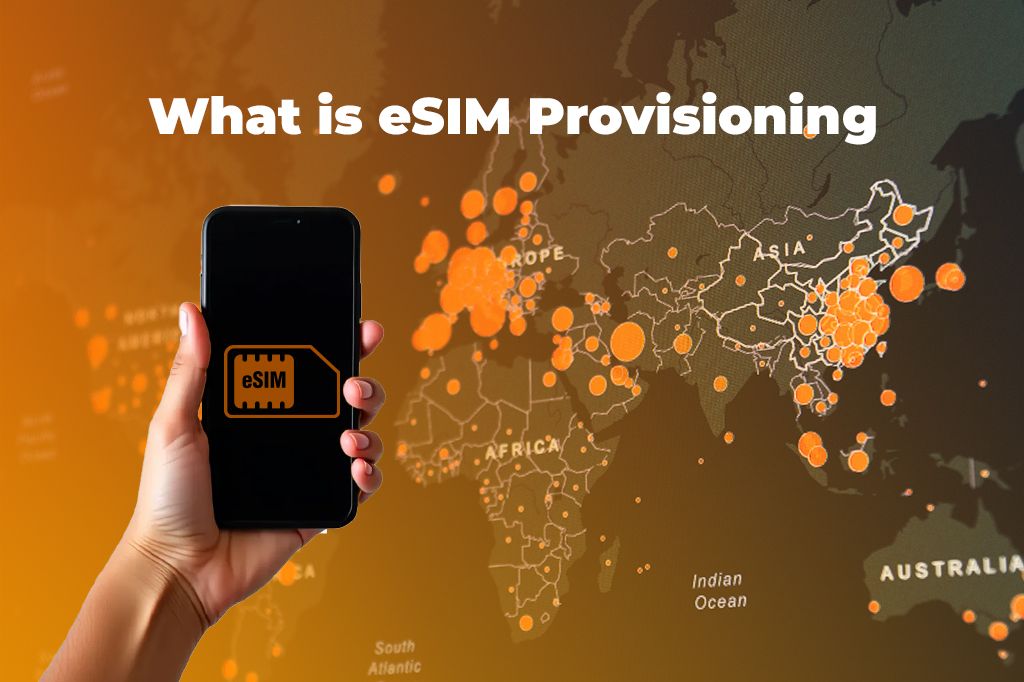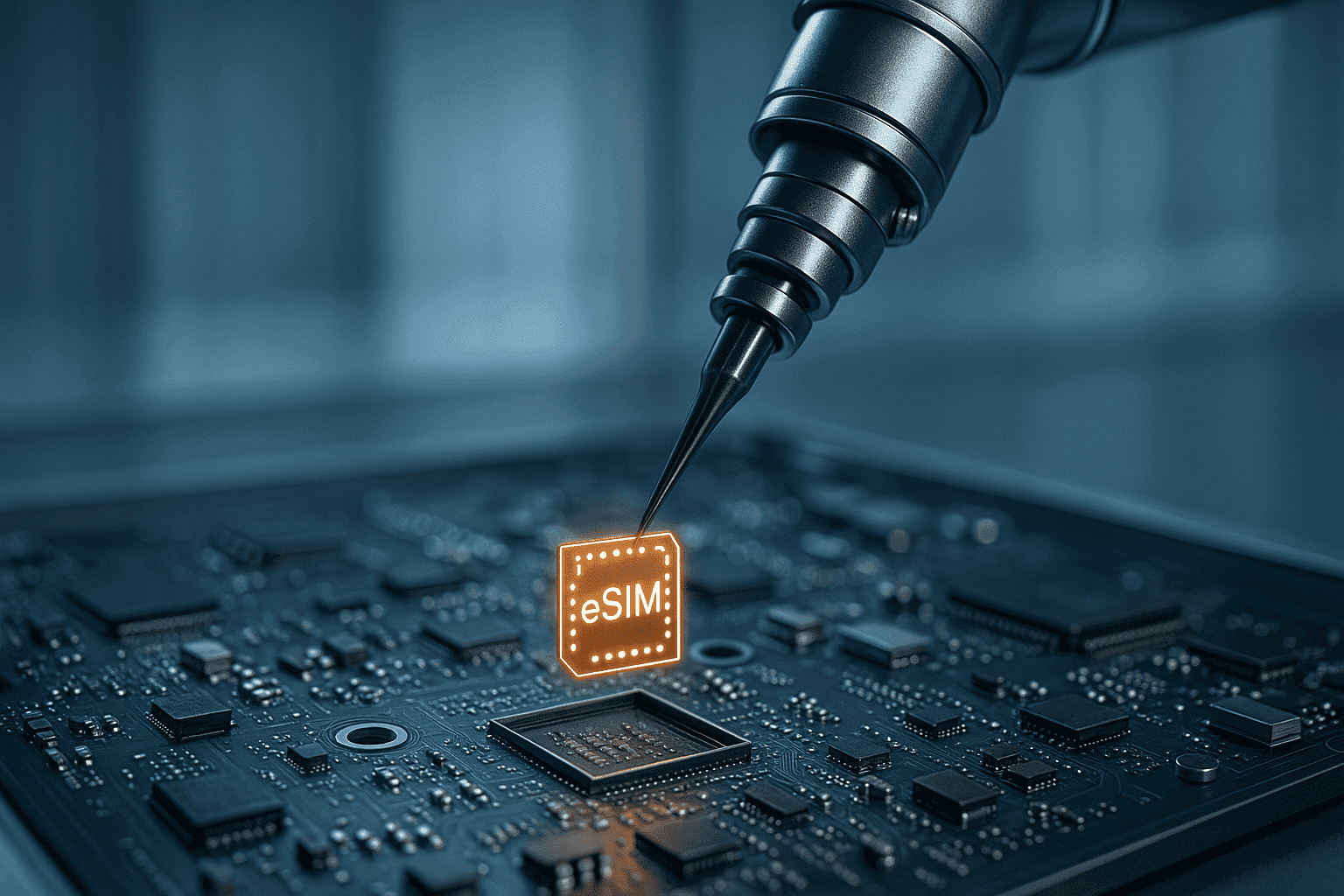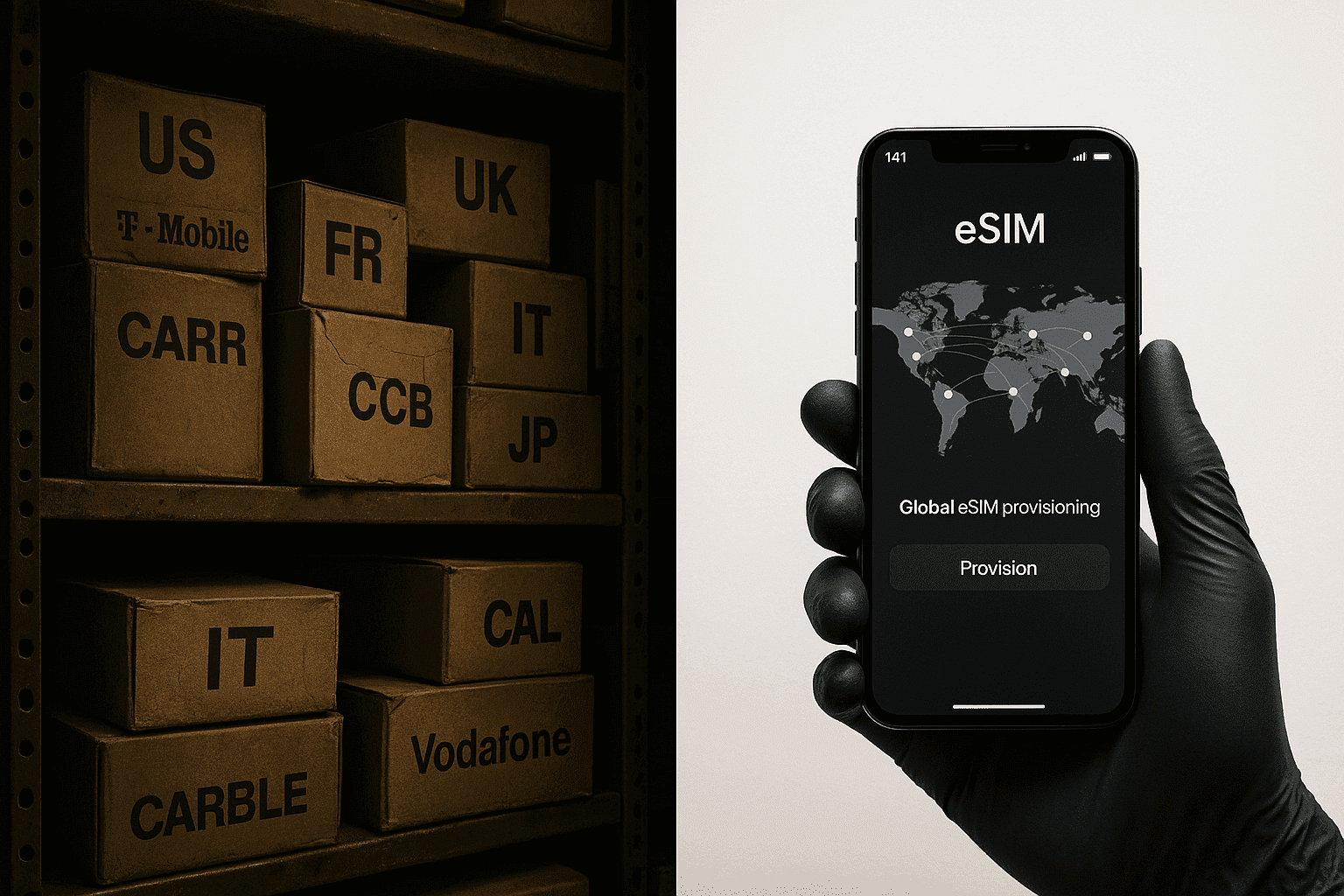Imagine getting a new phone and having it connect to a mobile network in seconds, without ever touching a tiny plastic card. This isn’t science fiction; it’s happening right now. Behind this is a quiet revolution called eSIM provisioning. But what is it, and how is it changing everything from our smartwatches to disaster relief efforts? Let’s find out.

Picture by Martin Sanchez on Unsplash
What is eSIM Provisioning?
At its heart, an eSIM is not just a digital version of a SIM card. It’s much smarter. Think of your old SIM card as a printed photo; it has one image, and you can’t change it. An eSIM, on the other hand, is like a digital photo frame. It’s a tiny, rewritable chip that’s permanently embedded within your device. You can’t remove it, but you can change the “photo” it displays over and over again.
This updating process is called Remote SIM Provisioning (RSP). In simple terms, RSP is the digital delivery of a mobile carrier’s plan (called a “profile”) directly to your device over the air. It’s like downloading an app, but for your cellular connection. No more stores, no more plastic, no more fiddling with a tiny pin to open a tray.
To make sure this works for everyone, everywhere, the mobile industry follows technical standards set by the GSMA. These include standards like SGP.22 for phones and SGP.32 for smart devices. These standards ensure that eSIMs and carrier profiles can work together no matter who made them.
Where eSIMs Come to Life
The journey of an eSIM-enabled device begins long before it reaches your hands. The groundwork is laid right on the factory floor. During the manufacturing process, the tiny eSIM chip is soldered onto the device’s main board.
But a blank chip is useless. It needs an identity. This is where in-factory provisioning comes in. A secure digital identity is injected into the eSIM’s secure element, a protected part of the chip. This initial profile, often called a “bootstrap” profile, acts like a temporary passport. It allows the device to connect to a network for the very first time, just long enough to download its permanent, operational profile.
In the factory, rigorous Quality Assurance (QA) testing is also done. The device is tested to ensure it can correctly download and activate profiles from multiple Mobile Network Operators (MNOs). This guarantees that when the device is out in the real world, it will connect seamlessly as intended.

SIM Logistics: From Warehouses to Software
For decades, connecting a device to a network was a physical headache. Think about the old way, when a company wanting to deploy thousands of devices across Europe would need to manage a massive, clunky supply chain. This meant dealing with warehouses filled with boxes of plastic SIM cards. Each box would be a different SKU (Stock Keeping Unit) for a specific country or carrier. They had to source SIMs for Spain, different ones for Germany, and yet another set for the UK. If a device in the field needed a new carrier, a technician had to physically drive out and swap the SIM card. It was expensive, slow, and a logistical nightmare.
Now, compare that to the new way with eSIMs. The “Zero-Touch Model,” powered by OTA (Over-the-Air) provisioning, dramatically simplifies this process. Instead of needing dozens of country-specific SIMs, a manufacturer can embed a standardized eUICC (embedded Universal Integrated Circuit Card) chip into each device. This enables a software-defined, remotely manageable SIM that can be provisioned with different carrier profiles as needed. While it’s not truly a “single global SIM profile,” it does support a single global hardware SKU that can be dynamically provisioned after deployment.

Who Uses eSIMs and Why
The real power of eSIM provisioning is not in the technology itself, but in what it enables. Here are some real-world stories that show its impact:
-
Smart Metering in Finland: Imagine trying to fix a faulty connection on a smart meter during a Finnish winter, with temperatures dropping to -20°C. In the past, this meant sending a technician in a truck to the location (a “truck roll”). Today, companies like Aidon use eSIMs. If a meter loses its connection, it can remotely switch it to a different mobile network in minutes, without anyone leaving the office.
-
Asset Tracking in India: A box of life-saving vaccines needs to be kept cold as it travels through the rural north of India. An eSIM-powered tracker inside the box can constantly monitor the temperature and location, sending alerts over the cellular network. If the primary network is weak in a remote village, the eSIM can automatically switch to a stronger one, ensuring the cold chain is never broken.
-
Automotive in the EU: European Union laws require all new cars to have an “eCall” system that automatically calls emergency services after a crash. When a car drives from France to Germany, its eSIM-based system can seamlessly switch from a French operator to a German one, ensuring it’s always connected to the local emergency network.
-
Consumer Electronics in South Korea: A group of students from Seoul can go on a school trip to a rural province. Their smartwatches, equipped with eSIMs, automatically switch to the network with the best coverage in that area, so their parents can always stay in touch.
-
Unexpected Niche: Disaster Relief Drones: After a hurricane or earthquake, cellular networks can be damaged and unpredictable. Disaster relief drones equipped with multi-profile eSIMs are deployed to map the area. These drones can automatically test and switch between whatever cellular networks are still partially operating, providing critical data to first responders.
Building a Business Around Provisioning as a Service
eSIM technology isn’t just a feature; it’s a foundation for new business models. For example, Mobile Virtual Network Operators (MVNOs) and connectivity providers are now offering managed eSIM provisioning as a white-label service. This means a smaller company can launch its own connected product without building a complex global infrastructure from scratch.
On the other hand, device manufacturers like Apple, Samsung, and Google have integrated eSIM management directly into their operating systems. This creates a smooth user experience and locks customers into their ecosystem. Also, a new wave of companies, especially in the travel tech space, are acting as resellers. They curate a marketplace of data profiles from different operators around the world. Travelers can then browse and buy a data plan for their destination through a simple app, making global connectivity as easy as booking a hotel.

FAQs About eSIM Provisioning
Is eSIM secure?
Yes, the underlying technology is highly secure. The data is encrypted and managed through secure servers certified by the GSMA. However, the biggest risk is human error. Misconfigurations in the provisioning platform are a more common vulnerability than the technology itself.
If you have not yet tried eSIM technology and want to start taking your first steps in this world, you can try Yoho Mobile’s free eSIM and get instant access to mobile data in most countries. But if you want to get your eSIM plan afterwards, use the code YOHO12 at checkout for a 12% discount!
Can I switch profiles instantly?
Not quite instantly. The process usually takes a minute or two. The device needs to securely contact the server, download the new profile, and register on the new network. There can also be regulatory constraints in some countries that add delays.
Does eSIM work everywhere?
No, not yet. While adoption is growing rapidly, some countries still have restrictions on eSIM use or require that profiles be provisioned locally.
What if my MNO profile gets revoked?
Your device isn’t bricked. Most professional eSIM solutions are set up with disaster recovery modes. They often have a fallback or “last gasp” profile that allows the device to get back online to receive a new, valid profile.
Is eSIM immune to SIM swapping attacks?
It is far less vulnerable, but not invincible. A traditional SIM swap attack involves tricking a carrier employee into moving your number to a physical SIM held by an attacker. With eSIM, there is no physical card to swap. An attacker would need to compromise your account credentials or the carrier’s systems, which is much harder. If you’re concerned about SIM swapping and want to learn how to spot the signs and protect yourself, this article is a helpful guide.
